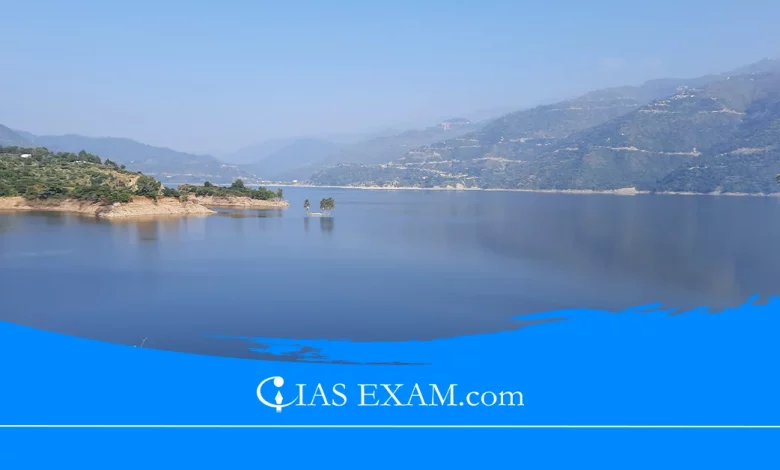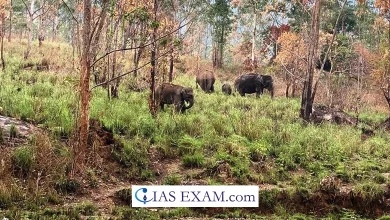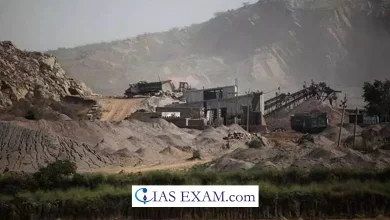Daily Current Affairs for UPSC
Report on Integrated River basins
Syllabus- International Relations [GS Paper-2]

Context
According to the recent report on integrated river basins, an integrated river basin management approach for the Indus, Ganga and Brahmaputra rivers can help flooding affecting people in south Asia.
About
- The recent report on integrated river basins has been authored by Kathmandu-primarily based International Centre for Integrated Mountain Development (ICIMOD) and Australian Water Partnership, a body funded by the Australian government.
Highlights of the report
- Growing challenge: People in India, China, Pakistan, Afghanistan, Nepal and Bhutan rely on these 3 rivers for their food and water security, the study highlighted.
- The Indus is a lifeline for 268 million people that live in its river basin whereas approximately 114 million people depend upon the Brahmaputra for water, power, food, agriculture and fishing.
- No multilateral treaty: Even as there are bilateral treaties along with the Indus Water Treaty between India and Pakistan or agreements on Brahmaputra between India and China, no multilateral agreements or treaties exist on this issue.
- The report said 600 million Indians, 29 million from Nepal and millions in Bangladesh live in the Ganga river basin region. However, there’s no settlement related to Nepal, India and Bangladesh.
- There have been substantial data and knowledge gaps across the Ganga river basin concerning social, economic and environmental realities and even on water usage.
Major recommendations
- Plug data gap: The reports encouraged that data gaps on river basins need to be plugged for better water management, early warning and to facilitate disaster management.
- Whole basin research approach: Developing statistics using a ‘whole basin’ research method might yield advantages:
- Data-sharing would inform more reliable water accounting, underpin strategic basin making plans, increase transboundary understanding of the long-term effects of climate change, secure more reliable water supply to all users even under uncertain conditions.
- Hydro-solidarity and climate diplomacy: The report also referred to as for more ‘hydro-solidarity’ and climate international relations amongst researchers to build trust between countries and move towards greater dialogue.
- Importance of harnessing indigenous and local knowledge systems: It holds so many insights into how local communities can solve problems quickly and effectively during a crisis. Governments need to empower local groups with knowledge and technology to nurture their resilience.
- Integrated River Basin Management: A basin-wide approach to river making plans, sponsored by quality data sharing on water availability, biodiversity and pollution between all stakeholders.
Integrated River Basin Management (IRBM)
-
- IRBM is a comprehensive approach that aims to harmonize the planning and management of water resources, sustainable development, and strategies within a river basin.
- IRBM involves coordinating conservation, management, and development of water, land, and related sources throughout sectors in a specific river basin.
- It emphasizes the integration of ecological, social, and economic aspects to acquire equitable and sustainable water use.
- The European Union has actively promoted IRBM through key framework directives:
- Water Framework Directive (WFD) and
- Flood Risk Management Directive (FRMD).
Challenges
-
-
- Cross-Sectoral Coordination: Balancing competing interests across sectors (e.g., agriculture, industry, environment) can be complicated.
- Data and Knowledge Gaps: Adequate reports on water availability, quality, and environment health are important.
- Legal and Institutional Frameworks: Harmonizing guidelines and policies across administrative boundaries is essential.
- Climate Change: Adapting IRBM strategies to changing climate conditions is a challenge.
- Public Participation: Engaging groups and making sure their lively involvement is also challenging.
-
Measures
-
-
- Holistic Planning: Develop comprehensive river basin plans that combine environmental, social, and financial considerations.
- Stakeholder Engagement: Involve neighborhood groups, NGOs, and enterprise representatives in choice-making approachs.
- Ecosystem-Based Approaches: Prioritize atmosphere health and resilience.
- Monitoring and Assessment: Regularly assess water first-rate, amount, and atmosphere repute.
- Adaptive Management: Continuously adjust strategies based totally on new statistics and converting instances.
-
Conclusion
-
- IRBM strives for a balanced and sustainable method to cope with our precious water assets, and subsequently needs to be promoted at every degree of planning.
Source: The Indian Express
UPSC Mains Practice Question
Q.Discuss how interlinking of rivers in India can be an effective solution to address the simultaneous occurrences of drought and floods. (250 Words)





.png)



